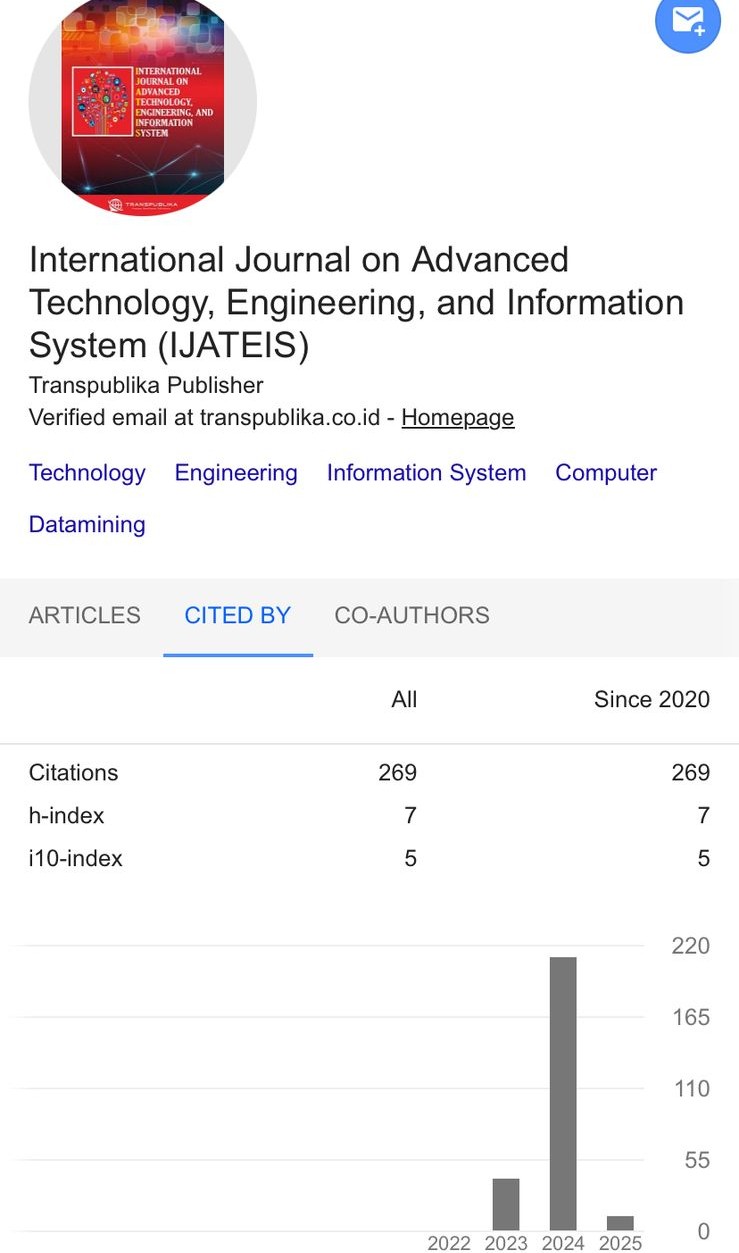Forecasting Tourism Visitor Numbers Using a Recurrent Neural Network with a Long Short-Term Memory Algorithm
Main Article Content
Ibnu Fallah Rosyadi*
Nurul Arifin Subandi
Rusdah
Accurate forecasting of visitor numbers is essential in tourism management to ensure service quality and visitor satisfaction, especially during peak seasons such as holidays and weekends. This study addresses the lack of a predictive tool at PT Taman Impian Jaya Ancol (TIJA), a major recreational destination in Indonesia, by developing a forecasting model for visitor numbers. The research utilized monthly time series data of visitor numbers from January 2012 to December 2022. A Deep Learning approach was applied using the Recurrent Neural Network (RNN) architecture with the Long Short-Term Memory (LSTM) algorithm. The dataset was split with an 80:20 ratio for training and testing, normalized using the RobustScaler technique, and optimized with the ADAM optimizer. The model achieved a minimum Mean Squared Error (MSE) of 0.3095 and a prediction accuracy of 94.85%. These results indicate that the LSTM model can effectively predict visitor trends. The findings are expected to support TIJA and other tourism operators in preparing resources and facilities in advance, improving operational planning, and enhancing the overall visitor experience.
Bollenbach, J., Neubig, S., Hein, A., Keller, R., & Krcmar, H. (2024). Enabling active visitor management: local, short-term occupancy prediction at a touristic point of interest. Information Technology & Tourism, 26(3), 521-552.
Chollet, F. (2018). Deep Learning with Python. In 2018 21st International Conference on Information Fusion, FUSION 2018. Manning Shelter Islan. https://doi.org/10.23919/ICIF.2018.8455530
Evans, M. K. (2003). Practical Business Forecasting. Blackwell Publishers Ltd.
Hanke, J. E., & Wichern, D. W. (2005). Business forecasting. Pearson Educación.
Heizer, J., & Render, B. (2014). Operations Management: Sustainability and Supply Chain
Liu, Z., Zhu, Z., Gao, J., & Xu, C. (2021). Forecast methods for time series data: A survey. Ieee Access, 9, 91896-91912.
Luthfianto, S. (2017). Perencanaan Dan Pengendalian Produksi. In Universitas Pancasakti Tegal,.
Mahmoud, A., & Mohammed, A. (2021). A Survey on Deep Learning for Time-Series Forecasting. In Studies in Big Data (Vol. 77, Issue February). Springer International Publishing. https://doi.org/10.1007/978-3-030-59338-4_19
Megariansyah, T. S. (2019). Prediksi Debit Aliran menggunakan Long Short-Term Memory (LSTM). Zenodo, 0–6.
Munawar, M., McNeil, R., Jani, R., Nur, E. M., & McNeil, D. (2024). Variation and Forecasting of Land Surface Temperature in Malaysia. Pertanika Journal of Science & Technology, 32(6).
Oktavia, R. C. D., Nurbaeti, Ratnaningtyas, H., & Rachmadhita, M. A. (2023). The influence of TikTok and destination image on the decision to visit Taman Impian Jaya Ancol post-pandemic and visitor satisfaction.
Tsaur, R. C., Wang, H. F., & Yang, J. . (2002). Fuzzy Regression For Seasonal Time Series Analysis. International Journal of Information Technology & Decision Making.
Wang, S., Li, J., Shi, X., Ye, Z., Mo, B., Lin, W., ... & Jin, M. (2024). Timemixer++: A general time series pattern machine for universal predictive analysis. arXiv preprint arXiv:2410.16032.
Yamin, M., Muthalib, A. A., Tin, R., & Rahim, M. (2020). Influence of the number of tourism visits, and hotel occupancy on tourism sector revenue and economic growth in Indonesia. International Journal of Economics and Management Studies, 7(8), 205-209.












